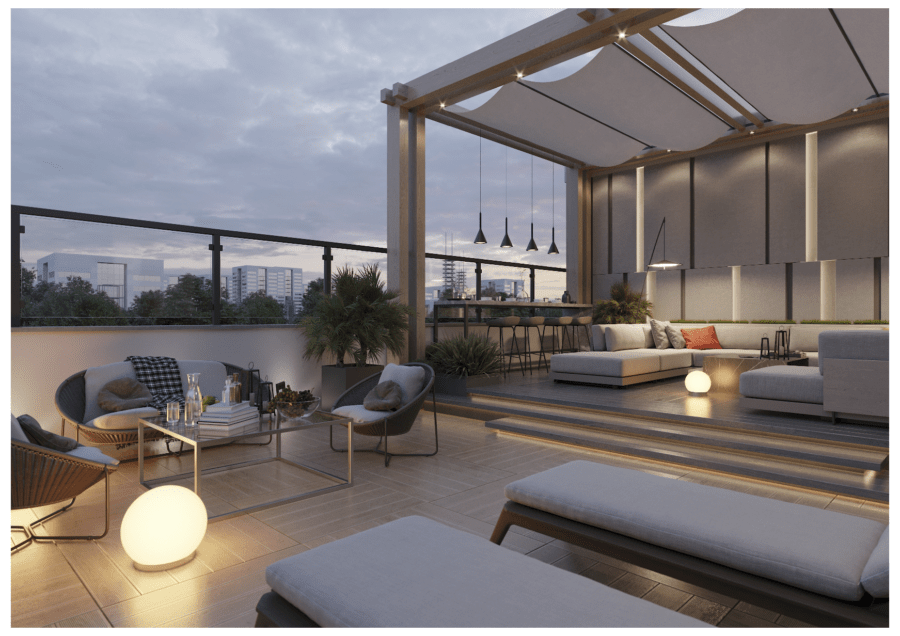Almaty, a rapidly evolving metropolis with a rich cultural and historical foundation, is on the cusp of a new architectural era. In 2024-2025, architectural firms in Almaty are focusing on finding a balance between modern trends, sustainability, and respect for the natural surroundings. Given the region’s unique topography, architects are incorporating eco-friendly and innovative solutions that are setting a new direction for architecture in Kazakhstan.
1. Sustainability and Eco-Friendliness as Top Priorities
One of the key architectural trends in Almaty for 2024-2025 is sustainability and eco-consciousness. Architects aim not only to create beautiful buildings but also to minimize their impact on the environment. This goal is reflected in the use of energy-efficient systems, installation of solar panels, creation of “green” roofs and facades, and the use of renewable materials.
Trendy buildings in Almaty now include residential and commercial complexes with low energy consumption, minimal carbon emissions, and innovative resource management systems. More and more architectural projects are aligning with international standards in eco-friendly construction, such as LEED and BREEAM, striving to meet global best practices.
2. Biophilic Design: Harmony with Nature
The trend of integrating nature into architectural projects remains relevant in Almaty. Architects are finding ways to combine urban environments with natural elements, creating buildings that not only impress with their design but also enhance people’s well-being. Biophilic design includes open terraces, living walls, outdoor relaxation areas, and the use of natural materials.
Biophilic buildings are trending due to their positive impact on health and mood, and because they help residents feel closer to nature. These principles are already being successfully applied in Almaty’s residential complexes and public buildings, where green roofs, floor gardens, and spacious landscaped areas are becoming more common.
3. Smart Technologies and Automation
With technological advances, the demand for smart technologies and automation in architecture is growing. Smart homes and buildings that can automatically regulate lighting, ventilation, and heating are gaining popularity in Almaty. Integrating smart management systems not only simplifies building operation but also reduces operating costs, which is especially important for commercial properties.
Almaty’s architectural firms are actively incorporating modern technologies in projects, including energy-saving systems, motion sensors, and connected devices for managing building infrastructure. Several large business centers, for instance, are now equipped with these technologies, allowing owners to efficiently manage resources and maintain comfort for all users.
4. Flexible and Multifunctional Spaces
Modern life demands new approaches to space usage, and Almaty’s architectural projects emphasize flexibility and multifunctionality. This trend is about creating buildings and spaces that can adapt to different needs, whether residential, office, or public space.
The trend of multifunctionality is particularly evident in commercial buildings, where workspaces can be easily transformed into meeting rooms, relaxation zones, and even sports areas. This approach enhances the quality of architectural services by making projects more adaptable and comfortable for various types of users.
5. Contemporary Minimalism and Local Color
Architects in Almaty strive to balance minimalism with the rich culture of the region. Many projects blend clean lines, light tones, and thoughtful functionality with elements of traditional Kazakh culture. For example, the use of traditional ornaments and motifs in decor and facades, as well as the integration of national materials like wood and stone, emphasizes cultural roots and the uniqueness of the buildings.
The trend of minimalism combined with local accents allows for projects that look modern but have individuality and character. This approach attracts clients who value both the aesthetic and cultural significance of a building.
6. Renovation and Adaptation of Old Buildings
Another significant focus for architectural firms in Almaty is the renovation and adaptation of old buildings. Many Soviet-era structures require updating, and architects are working to give these buildings a modern look while preserving their historical value.
Trendy renovation approaches include modernizing facades, improving energy efficiency, and adding new spaces while maintaining cultural heritage. The adaptation of old buildings allows for the creation of unique projects that attract the attention of both locals and tourists.
7. Emphasis on Quality Architectural Services
Clients in Almaty are increasingly focused on the quality of architectural services, including not only the building’s appearance but also thoughtful functionality, compliance with modern standards, and the use of high-quality materials. Architectural firms are striving for excellence at all stages of design—from concept to final project implementation.
The heightened attention to quality services is also tied to increasing competition in architecture and construction. This motivates companies to offer the best solutions for clients, emphasizing attention to detail and long-term reliability of their projects.
8. Social Architecture and Public Spaces
Modern architects in Almaty are dedicating significant attention to creating public spaces accessible to all social groups. This includes designing parks, relaxation zones, pedestrian paths, and bike lanes. Social architecture aims to create places for interaction and relaxation, improving residents’ quality of life.
Special focus is placed on projects that make the city more friendly for pedestrians, cyclists, and people with disabilities. Social projects strengthen the sense of community and enhance the value of the urban environment.
9. Architectural Lighting and Attention to Detail
Lighting has become a key element in creating atmosphere and highlighting the architectural features of buildings. Proper lighting for facades and interiors not only enhances the aesthetic appeal of a building but also makes it more visible and attractive to clients and guests. Almaty’s architects pay special attention to lighting details, creating unique imagery and memorable nighttime views of the city.
Almaty now showcases trendy buildings with an emphasis on nighttime lighting, creating architectural “magnets” for tourists and city residents alike.
Conclusion
The architectural trends of 2024-2025 in Almaty demonstrate a drive to create a comfortable, sustainable, and culturally rich urban environment. Architects in the city are drawing inspiration from local culture, international sustainability standards, and innovations. These principles not only improve residents’ quality of life but also shape Almaty’s identity as a modern and eco-oriented metropolis, where high standards of architectural services provide unique opportunities for growth and development.




